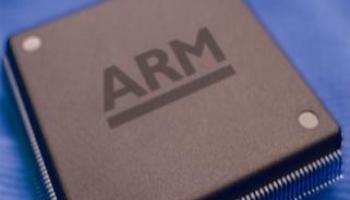Server chip provider, Calxeda, has created a partner program to create an ecosystem around its technology, and more quickly open up the industry for its products.
The startup essentially is building ARM-based chips for low-power data centre servers, and it has now announced its Trailblazer program, which kicked off with 10 initial members that touch on such areas as cloud computing and open-source software.
The partners all fall in line with Calxeda’s goal of creating data centre solutions based on highly energy-efficient servers that are powered by the company’s upcoming processor technology, with the goal of helping businesses stem the growth in energy consumption and reduce power costs.
Server Move
Formerly called Smooth-Stone, Calxeda is one of a growing number of chip makers looking to take ARM-based low-power chip designs – which currently are found in most smartphones and tablets – and create processors for energy-efficient servers for such environments as cloud computing and web serving and big data.
Marvell Technologies and Nvidia are among others heading in this direction, and ARM officials last year unveiled its Cortex-A15 design, which offers faster speeds, support for virtualisation and greater memory capacity, all elements important to processor chips.
They are looking to gain traction in an area traditionally held by x86 stalwarts Intel and Advanced Micro Devices. ARM CEO Warren East late last year declared that ARM-based chips would begin eating into Intel’s sizable server processor market share by 2014.
Calxeda officials expect to be players in that scenario.
In March, they said engineers were continuing to work on coding, and suggested that Calxeda’s SoC (system on a chip) – which initially will be based on ARM’s Cortex-A9 design – could start reaching OEMs later this year, with products based on the chips arriving soon after that.
Energy Crisis
The Trailblazer program is designed to push the Calxeda technology forward, according to CEO Barry Evans.
“We see Trailblazer as a critical step in the evolution of this marketplace, and are thrilled by the support we are receiving from the community to help it materialise,” Evans said in a statement. “The data centre energy crisis is real, and the faster we can help our system vendors and partners get complete solutions in our customers’ hands, the faster we can help them save money, and reduce their energy consumption and carbon footprint.”
 Initial program members are Autonomic Resources, Ubuntu sponsor Canonical, Caringo, Couchbase, Datastax, Eucalyptus Systems, Gluster, Momentum SI, Opscode and Pervasive. More companies are expected to join, according to Calxeda officials.
Initial program members are Autonomic Resources, Ubuntu sponsor Canonical, Caringo, Couchbase, Datastax, Eucalyptus Systems, Gluster, Momentum SI, Opscode and Pervasive. More companies are expected to join, according to Calxeda officials.
These vendors will be among the first to receive and test Calxeda’s products, and will also help end users evaluate Calxeda systems. The initial Trailblazer members will evaluate everything from application requirements to system configurations to estimated energy savings.
Trailblazer Members
Calxeda officials said the program is a way of meeting customer and partner demand for getting systems powered by its chips into data centres. Trailblazer members will get access to early silicon for proof-of-concept testing. They also will get early access to hardware, operating system software, tools, applications, and joint sales and marketing, the company said.
During an interview in March, Karl Freund, the former Hewlett-Packard and IBM executive who now is the startup’s vice president of marketing at Calxeda, said demand is starting to grow as the company gets the word out.
“Before the response was, ‘Are you crazy?’” Freund said. “Now the response is, ‘When do we get one?’”
Calxeda officials said their SoC will offer 120 quad-core ARM nodes – or 480 cores – in a 2U (3.5-inch) form factor. The average power consumption will be about 5 watts per node, and such a system will consume about 600 watts and offer the same performance as a full rack of x86-based systems that use about 4,000 watts.
However, there will be significant challenges, including the dominant positions Intel and AMD hold in the server market and the fact that a large number of data center applications run on x86, not ARM’s architecture.





